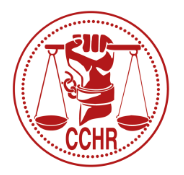A research article entitled, “Prescription Drugs Associated with Reports of Violence,” studied the instances of violence reported to the FDA’s Adverse Event Reporting System during the years 2004-2009. An adverse drug event is defined as some form of harm that is caused by the drug or from use of the drug. This study specifically looked to see if there was an association between drugs and those acts or thoughts of violence to others and indeed a connection was found.
It was found that 484 drugs had at least 200 case reports. It was then decided to see if any had a disproportionate association with violence and 31 out of the 484 actually did. Can you imagine that? Thirty-one drugs that have an “abnormal” amount of violent acts associated with it! These 31 drugs accounted for 1527 out of 1937 reports of violence, and keep in mind that is only the ones that were actually reported!
The list of drugs (Table 1) that are associated with violence is in order of highest proportion of violence cases reported to lowest. The worst offender is varenicline (brand name Chantix), which is a drug to help you stop smoking. Second and third, respectively, are antidepressants fluoxetine (brand name Prozac) and paroxetine (brand name Paxil). Other antidepressants known as Luvox, Effexor and Pristiq are also in the top ten. Therefore, half of the top ten are antidepressants! Eleven antidepressants in total are part of the 31 drugs associated with violence which is a third of the entire list! With these kinds of statistics how can it be that there are so many psychiatric drugs available when they are associated with violence?
The conclusion of this study reported,
“These data provide new evidence that acts of violence toward others are a genuine and serious adverse drug event that is associated with a relatively small group of drugs.”
Consider the shootings at Virginia Tech, random acts of violence when the person was never violent before taking these drugs….
This information makes it seem that the Black Box Warning on these antidepressants is inadequate, to say the least. Furthermore, this study focused only on violence to others. How about a study on the association of psychiatric drugs and suicide? Would the statistics of that study combined with the statistics of the above study finally be enough to prove that all these psychiatric drugs are harmful and dangerous?



So true! Every time I see some major shooting or something of that nature my first thought is always, “when do we find out that this person was on psych drugs” and invariably it comes to light at some point.